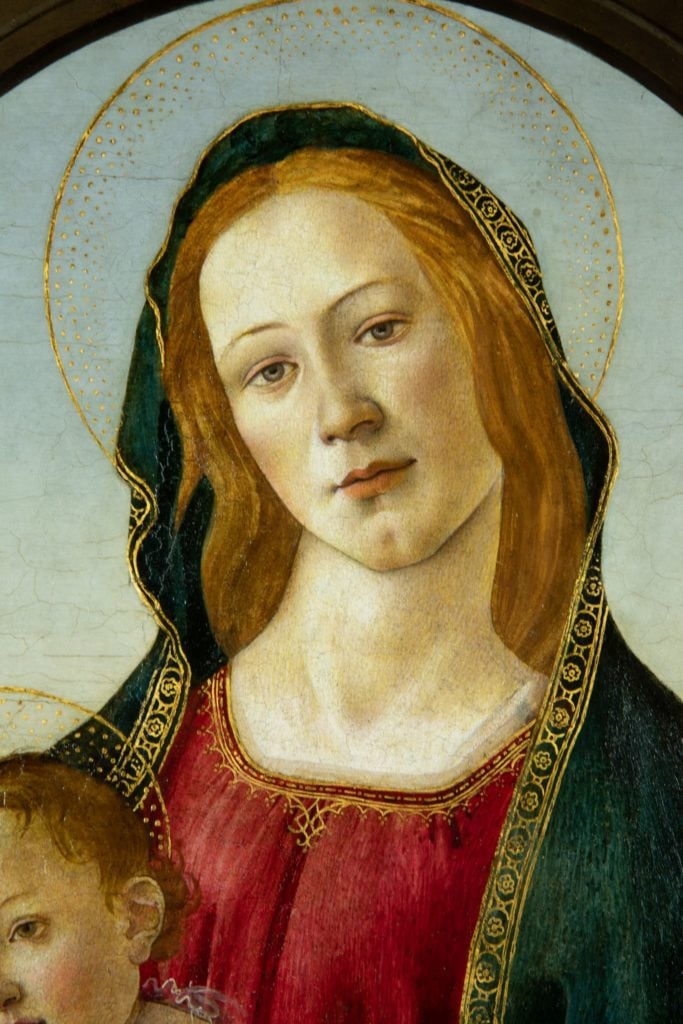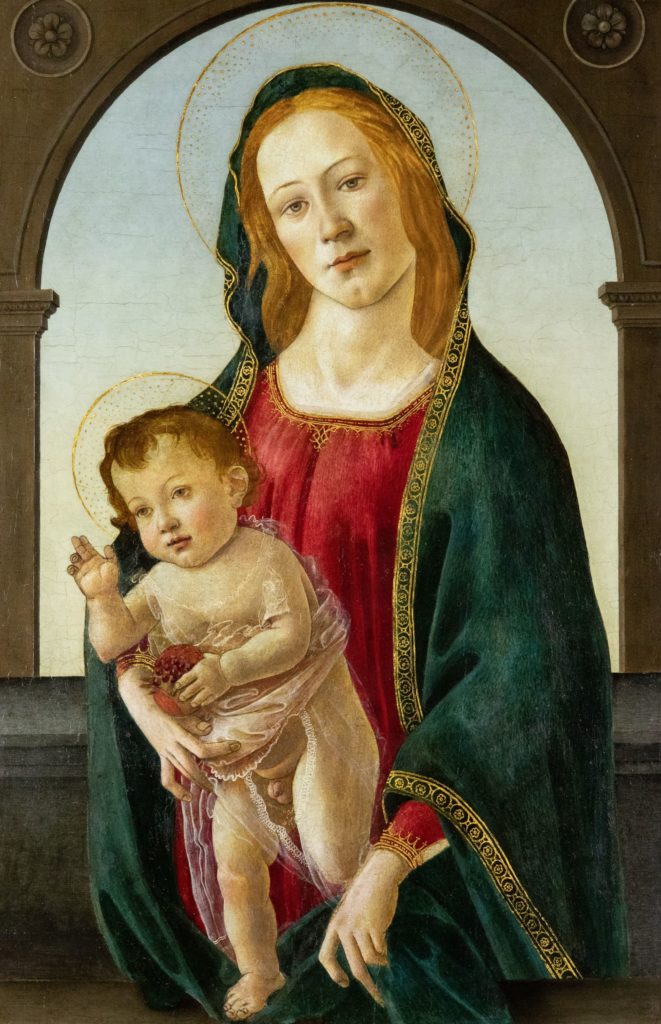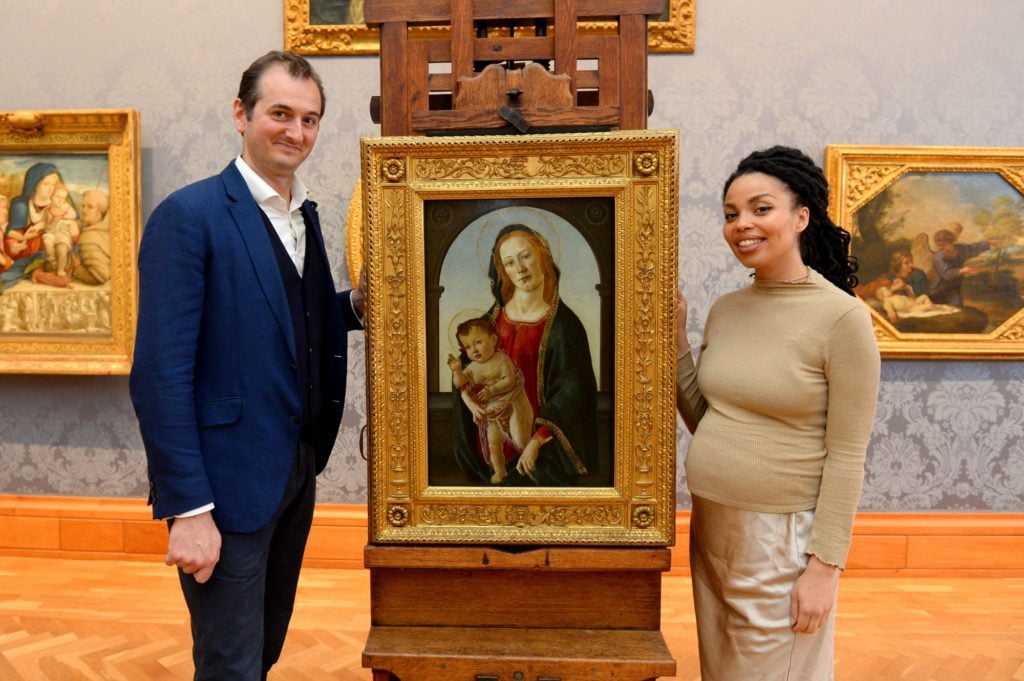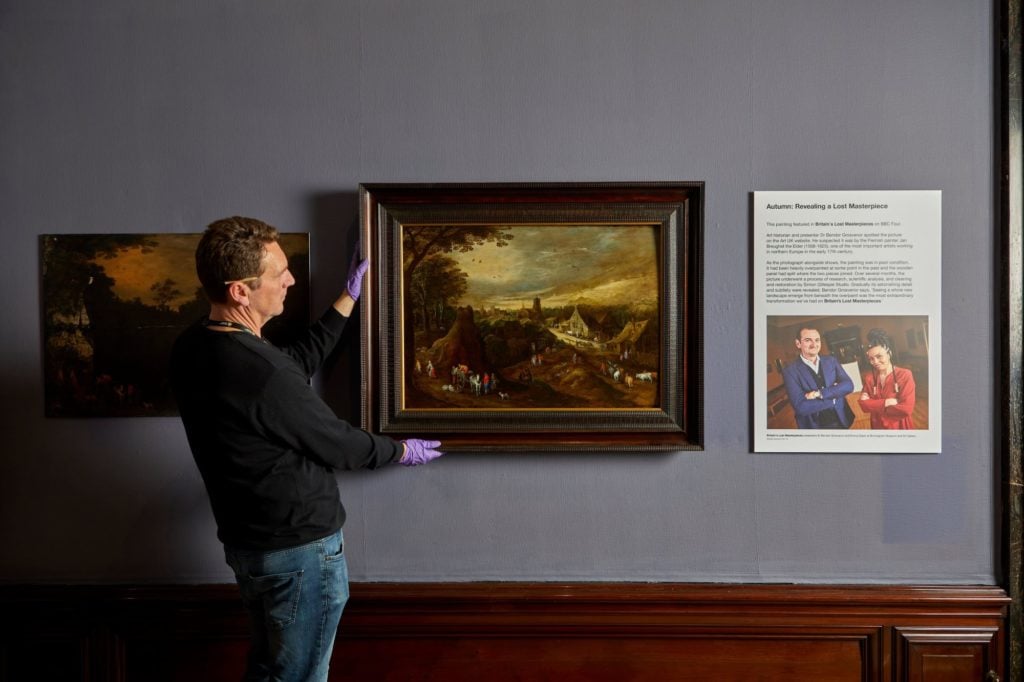Art World
A Museum in Wales Had a Botticelli Right Under Their Noses and Didn’t Realize It Until This Helpful TV Art Detective Told Them
The painting is the latest discovery made on the BBC show 'Britain's Lost Masterpieces.'

The painting is the latest discovery made on the BBC show 'Britain's Lost Masterpieces.'

This week it’s a Botticelli, last week a Brueghel. The number of Old Masters in UK museums that would never see the light of day unless the broadcaster and art historian Bendor Grosvenor has spotted their potential is growing fast. Both paintings are now on public display, having been cleaned, reattributed, and revealed during the hit art detective TV series Britain’s Lost Masterpieces.
The Madonna and Child by the Italian Renaissance artist and his workshop went on show today at the National Museum Cardiff in Wales. It had been in storage for more than half a century, regarded as a mere copy. “It fell from grace because experts never quite made the effort to go and see it,” Grosvenor tells Artnet News, pointing out its distance from London.
The same is true of a landscape by Pieter Brueghel the Younger. The dingy looking panel painting was in a drawer at the Birmingham Museum and Art Gallery in the Midlands of England. A wreck of a painting, it was broken in two, heavily over painted, and attributed to an “anonymous Flemish artist.” It too is now on display, thanks to the Lost Masterpiece team. Grosvenor’s eye was drawn to the quality of a cow’s backside, and a horse. Assisted by the conservator Simon Gillespie, who removed decades of dirt and layers of discolored varnish, and the academic Emma Dabiri, who placed the art into a wider historical context.

Virgin and Child with a Pomegranate (around 1500) newly attributed to Botticelli and workshop on Britain’s Lost Masterpieces. National Museums of Wales.
The TV show has earned Grosvenor and Dabiri an international fan base. “What Britain’s Lost Masterpiece is all about is good stories,” Grosvenor says. The big reveal is also crucial. “Not everyone gets hung up on the answer being the right one. Happily, we sometimes get it wrong, which helps the jeopardy,” he says. A recent miss included a landscape, also in Birmingham’s stores, that could have been a late Thomas Gainsborough. It turned out to probably be by a contemporary who made his living copying the work of the famous painter.
“The great thing about the series is that you can’t make a decision until you have done all the research and the restoration,” Grosvenor says.
During the program on Virgin and Child with a Pomegranate, long thought to be a copy of a Botticelli, infra-red photographs revealed under-drawing typical of the Renaissance artist’s hand and studio, indicating that the painting was genuine. Doodles hidden for more than 500 years revealed a man’s head made, probably by the great artist himself, before the painting was finished.
A further twist to the story came when Gillespie, who worked closely with National Museum of Wales’s chief conservator Adam Webster, discovered that the arched background was the work of a 20th-century forger. The national museum decided to keep the later addition as part of the painting’s history. The story is a tribute to the Davies sisters, the museum’s greatest supporters, who were determined that Wales should have a world-class art collection. Gwendoline Davies, who knew her Old Masters, bought the work in the 1920s as a Botticelli.
All the paintings so far rediscovered have one thing in common: They are in the UK’s public collections. Grosvenor pays tribute to the website Art UK, which is a vast illustrated database of 200,000 oil paintings by some 38,000 artists in museums, galleries, town halls, and university collections. It grew out of the Public Catalogue Foundation’s printed volumes, an epic task begun more than a decade ago.
Grosvenor describes them as a unique resource. “Fred Hohler deserves a knighthood,” Grosvenor says. The former diplomat was the driving force to get every painting photographed that is in the UK’s public collections, however grand or lowly, no matter what the work’s condition. Hohler is now working on a companion project documenting the nation’s watercolors, while Art UK is focusing on sculptures.

Bendor Grosvenor and Emma Dabiri, the presenters of the TV show Britain’s Lost Masterpieces, Bendor Grosvenor and Emma Dabiri, with Botticelli’s Madonna and Child. Picture courtesy of National Museums Wales.
Grosvenor is sticking with what he knows best: overlooked oil paintings in museums’ stores. Cleaning a sculpture would not provide the same reveal, he says. He has already started working on the next series of Britain’s Lost Masterpieces. He has already identified enough strong candidates, although the lack of high-resolution images is a source of frustration, as are high reproduction fees.
As well as sharing art-historical and conservation expertise, the program does an exemplary job of putting the paintings into a political context. Gainsborough was painting a countryside in which the poor were being pushed off common land where they had grazed their cattle, Dabiri pointed out. The artist also painted the portrait of a sitter who owned a slave plantation in the Caribbean, Grosvenor revealed.
Asked about the Marxist tincture of the TV program’s version of art history, Grosvenor, who is a former advisor to the Conservative Party (he recently split over its hard Brexit policies) chortles. “It is definitely true that art history has been written by a male, center-right wing perspective,” he says. “All balance is good.”

Brueghel the Younger’s landscape goes on show at Birmingham Museum and Art Gallery after its rediscovery on Britain’s Lost Masterpieces.
Grosvenor and Dabiri make Britain’s Lost Masterpieces very different from the BBC’s other art detective program, Fake or Fortune? Grosvenor used to contribute to the latter, alongside Philip Mould, the art dealer and Grosvenor’s former employer.
“It is so refreshing not to have to deal with prices,” Grosvenor says. So far he has uncovered 16 paintings from across the UK. “It is hard enough finding paintings that tick all the boxes in terms of are they dirty, are they by an artist we haven’t done before, are they in a city we haven’t been to before? If I then had to start thinking ‘Is it worth millions?’ it would be pointless.”